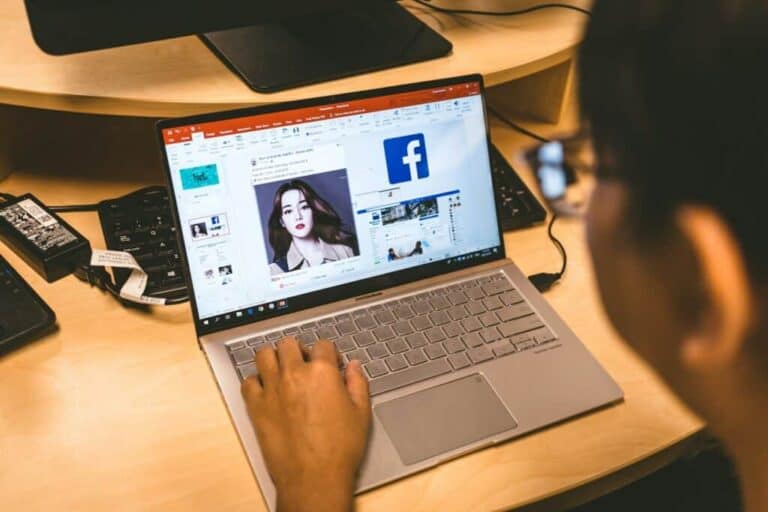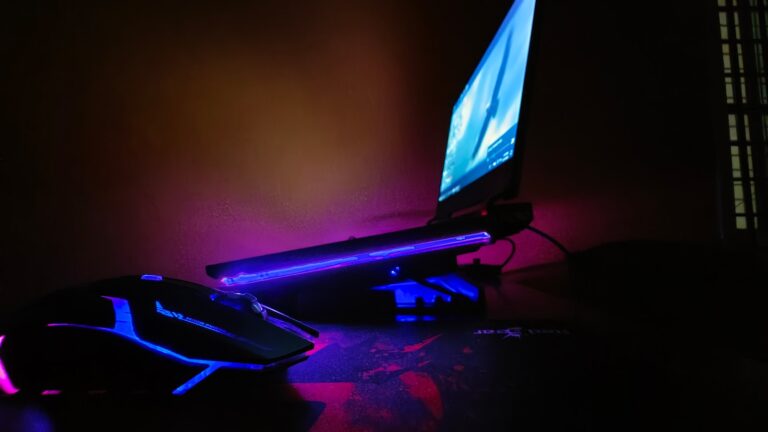
Back-to-school season is more tech-driven than ever. Whether you’re headed into high school, college, or grad school, your laptop will likely be your most-used academic tool. But with AI integration, rising software demands, and hybrid learning now standard, choosing the right laptop isn’t just about meeting today’s needs—it’s about ensuring it lasts until you graduate (and maybe beyond).
Here’s a comprehensive guide to help you make a smart, future-proof laptop investment in 2025.
1. Pick a Processor That Can Keep Up With AI and Multitasking
Your CPU determines how long your laptop will stay relevant. With AI-powered tools like Microsoft Copilot, GrammarlyGO, and Adobe Firefly becoming standard across productivity suites, your processor needs to do more than just handle spreadsheets.
Recommended CPUs:
- Intel Core Ultra 7 / Ultra 9 (Meteor Lake, with integrated NPUs)
- AMD Ryzen 7 / 9 8000 or 9000 Series (especially models with Ryzen AI)
- Apple M3 / M4 (MacBooks remain top-tier for performance-per-watt and battery life)
Avoid older-gen processors (like Intel 11th-gen or AMD Ryzen 5000) that are already falling behind in both efficiency and future software support.
2. Future-Proof RAM: 16GB Is the New Baseline
8GB of RAM might scrape by today, but won’t age well with increasing browser bloat, AI assistants, and multitasking demands.
Why 16GB is ideal:
- Smooth multitasking with Office, Chrome, Zoom, and Photoshop open
- Better performance in AI-driven features and cloud apps
- More headroom for future OS upgrades (Windows 11 and macOS Sequoia are already RAM-hungry)
Power users (engineering students, creatives, coders) should consider 32GB.
3. Storage: Don’t Go Below 512GB SSD
Apps are getting larger, school files pile up fast, and cloud storage isn’t always enough. SSDs are fast and reliable, and in 2025, anything less than 512GB NVMe SSD is a risk.
Why it matters:
- Faster boot and load times
- Less system lag over time
- Enough room for dual-boot setups or larger media libraries
Creators and coders may want 1TB, especially if working with video, large datasets, or multiple OSes.
4. Screen Size & Display Quality: Comfort is Long-Term Value
Your screen affects eye strain, productivity, and how much you’ll enjoy using your device. Don’t overlook it.
Recommended specs:
- 13″ to 15.6″ screen size for portability and comfort
- 1920×1080 (FHD) minimum, with OLED or IPS panels for sharpness and color accuracy
- Touchscreen or 2-in-1 convertibility for flexibility, especially for note-taking and sketching
Studying visual arts, media, or development? Opt for 2.5K or 4K displays with DCI-P3 or AdobeRGB color support.
5. Battery Life: All-Day Use Should Be Standard
Laptops need to survive back-to-back lectures, labs, or study sessions without needing a charger every few hours.
Look for:
- 10+ hours of real-world battery life (not just lab tests)
- USB-C fast charging support
- Efficient chipsets (Apple M3, AMD Phoenix, Intel Meteor Lake)
MacBooks consistently lead here, but newer Windows ultraportables like the ASUS Zenbook or Dell XPS series are catching up.
6. Built-In AI Acceleration Is the Future
Laptops are quickly evolving into AI PCs. You’ll want hardware that supports real-time translation, on-device editing, smart recall features, and future Windows Copilot+ updates.
Look for:
- Dedicated NPU (Neural Processing Unit) in AMD Ryzen AI or Intel Ultra chips
- Apple M3/M4’s Neural Engine, which powers on-device Siri and machine learning tasks
- Hardware certified for Copilot+ PCs, if going Windows
AI-driven efficiency will become non-negotiable by 2026.
7. Build Quality: Your Backpack Shouldn’t Destroy It
School life is rough on laptops—backpacks, spills, late-night typing sessions, and dorm life all take a toll.
Choose a device with:
- Metal chassis (aluminum or magnesium alloy) over plastic
- Spill-resistant keyboard
- Backlit keys for low-light studying
- Precision touchpad and sturdy hinges
Look for MIL-STD-810H military-grade durability certifications where available.
8. Connectivity: Wi-Fi 6E or Wi-Fi 7 Is Essential
You’re likely spending a lot of time online—whether it’s streaming lectures, downloading massive project files, or doing research.
Must-haves:
- Wi-Fi 6E or Wi-Fi 7 for blazing speeds and reduced interference
- Bluetooth 5.3 or later for better wireless peripherals
- USB-C with Thunderbolt 4 or USB4 for fast data and charging
A future-ready laptop shouldn’t skimp on ports either: at least one USB-A, one USB-C, and ideally an HDMI or SD card slot.
9. Don’t Underestimate Webcam & Microphone Quality
Good video and audio are now essential for hybrid classes and virtual office hours.
Minimum webcam/mic specs:
- 1080p webcam
- AI-based noise cancellation
- Physical privacy shutter, if available
Look for laptops branded with Studio Mics or similar terminology for clearer online communication.
10. Software Longevity: You Need 5+ Years of Support
Some laptops age faster than others—not because of hardware, but due to manufacturer update policies.
Brands with long software support:
- Apple MacBooks (5–7 years of major updates)
- Microsoft Surface devices
- Select business-class models from Lenovo, Dell, HP
Avoid budget models that are unlikely to receive updates past 2–3 years.
Bonus: Consider Upgradability & Repairability
Upgradable laptops give you breathing room. Look for Windows laptops that allow:
- RAM upgrades
- SSD replacement
- Easily replaceable batteries
Framework laptops are leading this space, and some Lenovo ThinkPad and Dell Latitude models still offer modular access.
✅ Future-Proof Laptop Checklist for Students (2025)
| Feature | Recommendation |
|---|---|
| CPU | Intel Core Ultra, AMD Ryzen 8000/9000, Apple M3/M4 |
| RAM | 16GB minimum (32GB for power users) |
| Storage | 512GB+ NVMe SSD (1TB ideal) |
| Display | 13–15.6″, 1080p+ OLED or IPS |
| Battery | 10+ hours, fast charging |
| AI Hardware | NPU (Intel/AMD), Apple Neural Engine |
| Connectivity | Wi-Fi 6E or Wi-Fi 7, USB-C/Thunderbolt |
| Webcam & Mic | 1080p HD, noise-canceling mic |
| Build Quality | Durable chassis, spill-resistant keyboard |
| OS Support | 5+ years of updates |
| Upgradability | SSD/RAM replaceable (where possible) |
A future-proof laptop isn’t just about raw power—it’s about flexibility, longevity, and adapting to how tech is evolving. By investing in the right specs today, you’re not just buying a computer—you’re buying peace of mind for every assignment, Zoom call, and project to come.
Key Takeaways
- Choose a laptop with at least 16GB RAM and 512GB SSD storage to handle both current and future software demands.
- Consider display quality, battery life, and connectivity options based on your specific academic needs.
- Regularly maintain your device by updating software and cleaning storage to extend its useful lifespan.
Understanding Your Needs
Before selecting a laptop, it’s essential to think about how you’ll actually use it. Your specific requirements will determine which features matter most for your academic success and personal enjoyment.
Assessing Academic Requirements
Your field of study directly impacts what you need from a laptop. Engineering or design students require powerful processors and dedicated graphics cards for CAD software or 3D modeling. An Intel i5 or AMD Ryzen 5 processor with at least 16GB RAM is recommended for these demanding applications.
Business or humanities students might focus more on portability and battery life since their software needs are typically less intensive. For these majors, an ultrabook with an i3 or Ryzen 3 processor and 8GB RAM could be sufficient.
Consider your course requirements carefully:
- Required software and applications
- File storage needs
- Note-taking preferences
- Group project collaboration tools
Most schools provide a list of recommended specifications by major. Check with your department to ensure your laptop meets their minimum requirements for educational apps and specialized software.
Remote Learning Aspects
The COVID-19 pandemic permanently changed how education works. Even as in-person classes return, hybrid learning remains common in many institutions.
Your laptop should handle video conferencing smoothly. Look for:
- Webcam with at least 720p resolution
- Quality microphone (built-in or external)
- Stable Wi-Fi connectivity (Wi-Fi 6 preferred)
- Battery that lasts through long Zoom sessions
Flexibility becomes crucial when switching between home and classroom environments. Consider a 2-in-1 convertible laptop that functions as both a tablet and computer, making it easier to take notes or review digital textbooks.
Storage is another key factor. With more course materials being digital, aim for at least 256GB SSD storage to keep your files organized and accessible whether you’re learning remotely or in person.
Entertainment and Leisure
Your laptop isn’t just for studying—it’s also your entertainment hub. After hours of lectures and homework, you’ll want a device that handles your downtime activities well.
For casual gaming, integrated graphics like Intel Iris Xe or AMD Radeon can handle lighter games. Serious gamers should consider dedicated gaming laptops with NVIDIA or AMD graphics cards, though these sacrifice battery life and portability.
For movie buffs, display quality matters. Look for:
- Full HD (1080p) resolution minimum
- IPS panel for better viewing angles
- 13-15″ screen for portability; 15-17″ for entertainment
- Consider color accuracy (100% sRGB) if you enjoy photography
Audio quality varies dramatically between models. Testing speakers before purchase is ideal, but reading reviews works too. Many students pair their laptops with wireless earbuds or headphones for better sound quality during both leisure and study time.
Choosing the Right Operating System
The operating system you select for your laptop creates the foundation for your entire computing experience. Each OS offers unique advantages that align with different academic needs, workflow preferences, and budget considerations.
Windows 11 Advantages
Windows 11 provides excellent compatibility with most software you’ll need for school. Nearly all educational applications run on Windows, making it a safe choice for most students.
The latest version offers enhanced multitasking features like Snap Layouts, which let you organize your screen when working on multiple assignments simultaneously. This is particularly helpful during research projects.
Windows laptops come at various price points, giving you flexibility based on your budget. You can find options from $300 basic models to $2,000+ premium devices.
Connectivity is a strong point with Windows 11 laptops. Most models include multiple USB ports, HDMI, and SD card readers, which prove useful for presentations and transferring files.
For those in specialized fields like engineering or design, Windows supports the broadest range of professional software and hardware peripherals.
MacOS Benefits
MacOS offers exceptional build quality and reliability in MacBook and MacBook Pro models. While initially more expensive, these devices often last longer than their Windows counterparts, potentially saving money long-term.
The Apple ecosystem creates a seamless experience if you already use an iPhone or iPad. Features like AirDrop make transferring files between devices effortless, and Handoff lets you start work on one device and continue on another.
MacBooks excel in battery life, typically offering 10-20 hours of use between charges. This means you won’t need to search for power outlets during long days of classes.
Creative students in fields like graphic design, video production, or music benefit from MacOS’s specialized creative applications and optimization for media tasks.
The clean, intuitive interface requires less maintenance than Windows, with fewer updates and almost no vulnerability to common viruses.
Chromebook Considerations
Chromebooks run on Google’s lightweight Chrome OS, perfect for students who primarily work online. If your coursework revolves around Google Workspace or web applications, a Chromebook offers everything you need.
These laptops boot up in seconds and update automatically in the background, saving valuable time between classes. Their simplified nature means less technical troubleshooting.
Budget-conscious students benefit from Chromebooks’ affordability, with many models priced between $200-$500. The basic specifications are sufficient since Chrome OS requires fewer resources than other operating systems.
Battery life is exceptional, often exceeding 10 hours. This, combined with lightweight designs, makes Chromebooks highly portable for campus life.
The main limitation is software compatibility. Before choosing a Chromebook, verify that specialized programs for your major will work in the Chrome environment or have web-based alternatives.
Hardware Specifications
Choosing the right hardware for your laptop is crucial for ensuring it remains useful throughout your academic journey. The components you select today will determine how well your device handles tomorrow’s demands.
Processor and Performance
When selecting a laptop for school, the processor is your foundation for future-proof performance. Look for at least a quad-core processor from recent generations—Intel’s 12th generation or newer, or AMD Ryzen 5000 series or above provide excellent performance.
For general schoolwork, an Intel Core i5/i7 or AMD Ryzen 5/7 will serve you well. If you’re studying graphic design, engineering, or other demanding subjects, consider stepping up to higher-tier options.
Clock speed matters too. Aim for base frequencies of at least 2.5GHz with boost capabilities above 4GHz for smoother multitasking.
Processor Recommendations:
- Basic studies: Intel Core i5 or AMD Ryzen 5
- Advanced/technical fields: Intel Core i7/i9 or AMD Ryzen 7/9
- Creative work: Models with dedicated GPUs from NVIDIA or AMD
RAM and Storage Solutions
RAM directly impacts your laptop’s ability to handle multiple programs simultaneously. Today’s minimum standard for future-proofing is 16GB of RAM, though 8GB might suffice for basic tasks.
Storage is equally important. Prioritize SSDs (Solid State Drives) over traditional hard drives for significantly better performance. For maximum speed, look for PCIe-based SSDs rather than SATA SSDs.
A good configuration combines faster storage with adequate capacity:
- System drive: 256GB-512GB SSD for operating system and programs
- Secondary storage: Additional SSD or cloud storage for documents and media
Ensure your laptop offers upgrade options—models with accessible RAM slots and additional M.2 slots provide valuable flexibility for future expansions.
Battery Life and Portability
Long battery life is essential for classroom use where power outlets may be limited. Look for laptops advertising 8+ hours of realistic battery life, not just manufacturer claims under ideal conditions.
Weight matters more than you might think. A lightweight laptop (under 4 pounds) makes a significant difference when carrying it between classes all day.
Battery features to consider:
- Fast charging: Models that can reach 50% charge in under 30 minutes
- Battery health settings: Software that limits charging to 80% to extend battery lifespan
- Power efficiency: Look for newer processors with better performance-per-watt ratings
USB-C charging capability can be a lifesaver, allowing you to use the same charger for your phone and laptop. This reduces what you need to carry and provides flexibility when borrowing chargers.
Display and Visuals
The display quality of your laptop significantly impacts your learning experience and eye health during long study sessions. Choosing the right screen specifications now can keep your laptop viable for years to come.
Screen Size and Resolution
When selecting a laptop for school, screen size matters for both productivity and portability. Most students find 13 to 15-inch displays offer a good balance between screen real estate and backpack-friendliness.
For resolution, avoid outdated standard-definition displays that look pixelated and strain your eyes. At minimum, choose Full HD (1920 x 1080) resolution for clear text and images. This resolution has become the standard for good reason.
If your budget allows, consider higher resolutions like QHD (2560 x 1440) or 4K (3840 x 2160) for more detailed visuals and better multitasking. These higher-resolution displays future-proof your laptop for increasingly visual coursework and media consumption.
Display Types and Eye Comfort
The type of display panel significantly affects color accuracy, viewing angles, and eye comfort during marathon study sessions.
Display Panel Options:
- IPS panels: Offer better color accuracy and wider viewing angles
- OLED displays: Provide deeper blacks and vibrant colors, but cost more
- Anti-glare coatings: Reduce reflections in bright environments
Look for displays with blue light filtering technology to reduce eye strain during late-night study sessions. Many laptops now include this feature, which limits exposure to sleep-disrupting blue light.
Refresh rate is another consideration for future-proofing your laptop. While 60Hz is standard, 120Hz or higher provides smoother visuals when scrolling through documents or during video playback. This becomes increasingly important as content evolves.
Connectivity Options
Modern laptops offer various connection options that determine how you’ll interact with other devices and networks. Choosing the right ports and wireless capabilities ensures your laptop remains useful throughout your school years.
Internet and Network Connectivity
When selecting a laptop for school, prioritize devices with the latest wireless standards. The newest Wi-Fi 7 adapters can future-proof your older laptop for years to come. Even if your school network doesn’t support Wi-Fi 7 yet, you’ll be ready when they upgrade.
Consider laptops with built-in cellular connectivity. Always-connected laptops with cellular capabilities allow you to work anywhere without depending on Wi-Fi hotspots. This feature also provides enhanced security compared to public networks.
For wired connections, ensure your laptop has an Ethernet port or adapter option. Many schools still rely on wired networks for certain applications, and the stability can be crucial during important online exams.
Peripheral Compatibility
Your laptop’s port selection determines which devices you can connect without adapters. Look for these essential ports:
- USB-C/Thunderbolt: Versatile ports that handle data, video, and charging
- USB-A: Still necessary for many existing devices
- HDMI or DisplayPort: For connecting to external monitors or projectors
- SD card reader: Essential for transferring photos, videos, or other files
High-definition webcams and multiple display ports make working on school assignments more efficient. You might need to connect to classroom projectors or use dual monitors for complex projects.
If your preferred laptop lacks certain ports, quality USB-C hubs can expand your connectivity options, though built-in ports are generally more reliable and convenient.
Software and Applications
Choosing the right software ensures your laptop remains useful throughout your academic journey. The right apps can extend your device’s lifespan by enhancing functionality without requiring hardware upgrades.
Essential Productivity Apps
Microsoft 365 offers the most comprehensive suite for students. The subscription includes Word for papers, Excel for data analysis, and PowerPoint for presentations. These programs receive regular updates, keeping your workflow current without needing to buy new software yearly.
Consider these free alternatives that save storage space:
- Google Workspace (Docs, Sheets, Slides)
- LibreOffice
- WPS Office
Cloud storage solutions like OneDrive (included with Microsoft 365), Google Drive, or Dropbox prevent data loss and free up valuable disk space.
Regular software updates are crucial for security and performance. Enable automatic updates when possible, but schedule them during non-study periods to avoid interruptions.
Specialized Educational Applications
Subject-specific applications can transform your laptop into a powerful learning tool. For math and science, invest in:
- Wolfram Alpha for complex calculations and visualization
- GeoGebra for geometry and algebra concepts
- Chemdraw for chemistry diagrams and molecular modeling
Language learners benefit from Duolingo, Rosetta Stone, or Babbel for practice outside class hours.
Note-taking applications like OneNote, Notion, or Evernote help organize your studies across multiple classes. These apps sync across devices, making your notes accessible even when your laptop isn’t available.
Video conferencing tools (Zoom, Microsoft Teams) remain essential for online classes and group projects. Install these before the semester begins to avoid last-minute technical difficulties.
Additional Features
When choosing a future-proof laptop, don’t overlook important built-in hardware and potential for upgrades that can extend your device’s useful life and adapt to your changing needs.
Built-In Cameras and Microphones
Modern learning environments demand good video conferencing capabilities. Look for laptops with at least 720p HD cameras, though 1080p is becoming the new standard for clearer video quality. Some models now feature AI-enhanced cameras that improve lighting and focus automatically.
Pay attention to microphone quality too. Multiple built-in microphones with noise-cancellation technology make a significant difference during virtual classes. Test the audio quality if possible before purchasing.
Camera placement matters as well. Top-bezel cameras provide the most flattering angle, while some slim designs place cameras at the bottom of the screen, creating unflattering views.
For privacy, choose models with physical camera shutters or dedicated kill switches that disconnect camera power when not in use.
Upgradability and Scalability
A truly future-proof laptop offers the flexibility to grow with your needs. Look for devices with accessible components that allow for upgrades.
Key upgradable features to consider:
- RAM slots with empty spaces for additional memory
- Multiple storage bays or replaceable SSDs
- Removable batteries (increasingly rare but valuable)
Check if memory is soldered to the motherboard or replaceable. 16GB RAM provides good future-proofing, but being able to upgrade from 8GB to 16GB or 32GB later saves money upfront.
Expansion ports also determine scalability. Look for:
- Thunderbolt/USB-C ports for connecting monitors and docks
- SD card readers for easy storage expansion
- HDMI or DisplayPort outputs for external displays
These connectivity options ensure your laptop can adapt to different workspaces and usage scenarios throughout your academic career.
Maintenance and Care
Keeping your laptop in top shape requires consistent attention to both its software and physical condition. Regular maintenance not only extends your device’s lifespan but also ensures it maintains peak performance throughout your academic journey.
Regular Software Updates
Staying current with software updates is crucial for your laptop’s performance and security. Set your operating system to update automatically to save time and ensure you never miss critical patches.
Most updates improve security and functionality, keeping your system protected against new threats. This is especially important when connected to public campus Wi-Fi networks.
Don’t ignore application updates either. Outdated programs can slow down your system and create security vulnerabilities. Schedule a monthly “update day” to check that all your software is current.
Regularly remove unnecessary programs and files to maintain efficiency. Your laptop will thank you with faster performance and improved battery life during those long study sessions.
Physical Cleaning and Care
Your laptop’s hardware needs just as much attention as its software. Proper physical maintenance prevents common issues and extends your device’s lifespan.
Clean your keyboard weekly using compressed air to remove dust and debris. This prevents sticky keys and potential internal damage from particles working their way deeper into the system.
Important cleaning tools:
- Microfiber cloths (for screens)
- Compressed air
- Electronics-safe cleaning solution
- Soft brushes for keyboard
Never eat or drink near your laptop. Liquid spills are among the most common causes of laptop damage and often require expensive repairs.
Invest in a good quality laptop bag with padding for transportation between classes. This protects against bumps and drops that could damage internal components.
Security and Privacy
Protecting your laptop from threats is essential for both your personal information and academic success. Good security habits prevent data loss and keep your digital life private while using your device at school and beyond.
Data Protection Methods
Start with a strong password for your laptop that combines letters, numbers, and symbols. Change it every few months for better security.
Enable two-factor authentication whenever possible on important accounts. This adds an extra verification step beyond just your password.
Install reputable antivirus software and keep it updated. Many schools offer free security software to students – check with your IT department.
Backup your data regularly using:
- External hard drives
- Cloud storage (Google Drive, OneDrive)
- Automatic backup solutions
Encrypt sensitive files to protect them if your laptop is lost or stolen. Most modern operating systems have built-in encryption tools.
Safe Online Practices
Be cautious about which Wi-Fi networks you connect to. Public networks at coffee shops or libraries can be risky. Consider using a VPN for added protection when using public Wi-Fi.
Keep your operating system and applications updated. These updates often fix security vulnerabilities that hackers could exploit.
Be careful about what you share on social media. Oversharing personal details can make you vulnerable to targeted attacks or identity theft.
Watch out for phishing attempts in emails or messages. Never click suspicious links or download attachments from unknown senders.
Use different passwords for different services, especially for your banking, email, and school accounts. A password manager can help you keep track of them all.
Frequently Asked Questions
Choosing the right laptop for school involves key decisions about hardware, software, and maintenance to ensure it serves you well throughout your academic career. Smart choices now can save you money and frustration later.
What are the key components to look for when selecting a durable laptop for educational purposes?
When shopping for a school laptop, prioritize a strong processor. Look for at least a quad-core CPU to handle multitasking between note-taking, research, and video calls.
RAM is crucial—aim for at least 16GB as this has become the practical minimum for smooth performance when running multiple applications.
Storage type matters more than capacity. Choose a PCI-E based SSD rather than a standard SATA SSD for significantly faster performance that will remain relevant longer.
Display quality deserves attention if you’ll be staring at screens for hours. A 1080p resolution is recommended as a minimum, especially if you’ll be watching videos or working on visual projects.
Battery life can make or break your school experience. Look for laptops advertising 8+ hours of real-world use, not just ideal conditions.
How can one assess the upgradeability of a laptop to ensure its longevity for school use?
Check if RAM is soldered or socketed. Socketed RAM can be upgraded later, while soldered RAM cannot—limiting your future options.
Research if the laptop has accessible storage expansion. Models with extra M.2 slots or replaceable drives offer more flexibility as your needs grow.
Battery replaceability is often overlooked. Some laptops have easily replaceable batteries, while others require professional service, affecting long-term usability.
Review the manufacturer’s documentation about upgradeability or look for teardown videos online before purchasing to understand what components can be modified later.
What are the potential benefits of choosing a modular laptop design for academic needs?
Modular laptops allow you to replace individual components rather than the entire system. This means you can upgrade just your processor or graphics card when needed.
This approach creates less electronic waste and can be more cost-effective than buying an entirely new laptop every few years.
Modularity supports adaptation to changing academic requirements. As you progress through school, you might need different capabilities that weren’t necessary initially.
Some modular designs offer interchangeable parts like detachable keyboards, rotating screens, or tablet functionality that accommodate different learning environments.
In terms of software, what strategies can be employed to maintain a laptop’s relevance over several school years?
Regularly update your operating system to benefit from security patches and new features. Enable automatic updates when possible to prevent falling behind.
Perform occasional factory resets between semesters to clear accumulated digital clutter that slows performance.
Use cloud-based applications where appropriate. These update automatically and reduce the burden on your local hardware while providing access across devices.
Consider lightweight alternatives to resource-intensive software. Many free or low-cost options exist that perform similarly but demand less from aging hardware.
Manage startup programs aggressively to prevent background processes from consuming resources. Only allow essential services to launch at startup.
Are there specific brands or models that are known for their longevity and support for students?
Business-class laptops often outlast consumer models. Brands like ThinkPad, Dell Latitude, and HP EliteBook are designed for durability and longer support cycles.
Apple MacBooks typically receive software support for 5-7 years, making them a reliable long-term investment despite higher initial costs.
Some manufacturers offer extended education warranties specifically for students. These can provide coverage throughout a four-year degree program.
Consider brands with strong repair networks on or near your campus. Local support options mean less downtime if problems arise during critical academic periods.
What maintenance practices should be implemented to extend the life of a student’s laptop?
Clean cooling vents and fans regularly to prevent overheating. Use compressed air to blow out dust buildup at least once per semester.
Invest in a protective case or sleeve to prevent physical damage during transport. Campus life involves frequent movement between classes, libraries, and dorms.
Maintain healthy battery habits by avoiding constant 100% charges and complete discharges. Aim to keep your battery between 20-80% when possible.
Be mindful of your working environment. Avoid using your laptop on soft surfaces that block airflow, in direct sunlight, or around food and drinks.
Schedule regular software maintenance by removing unnecessary files, organizing documents, and running disk cleanup utilities to optimize performance.





